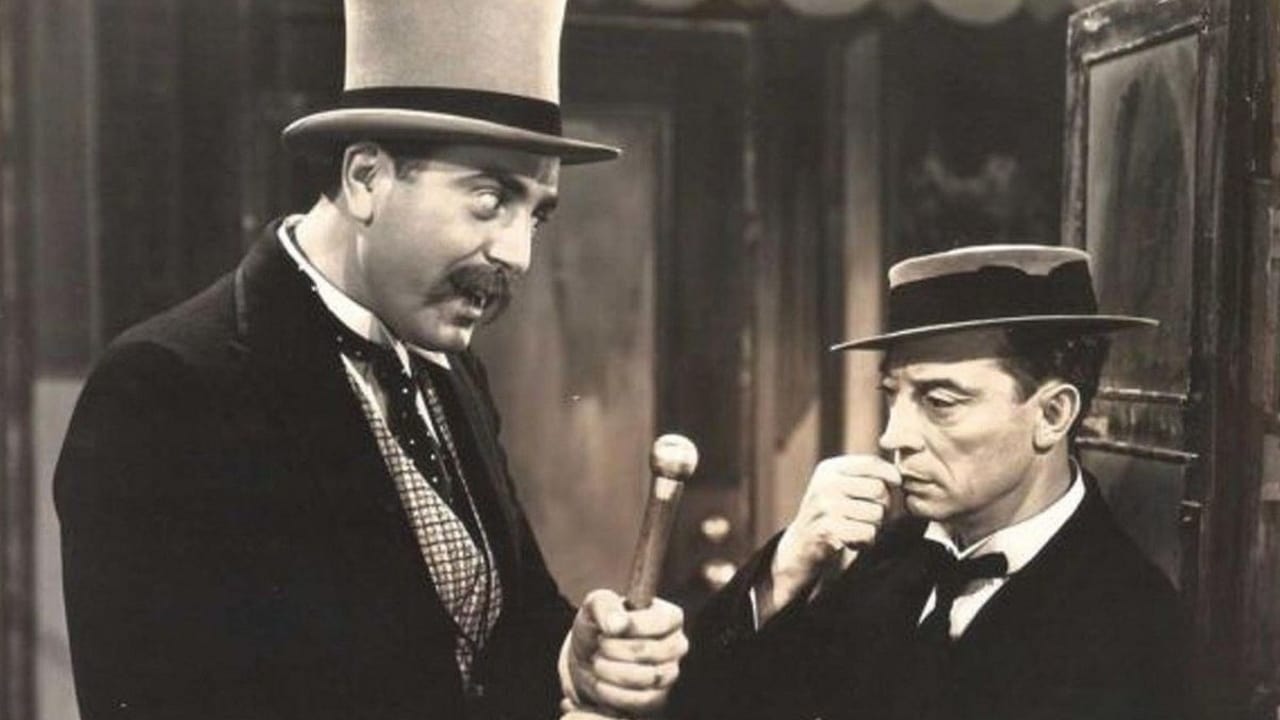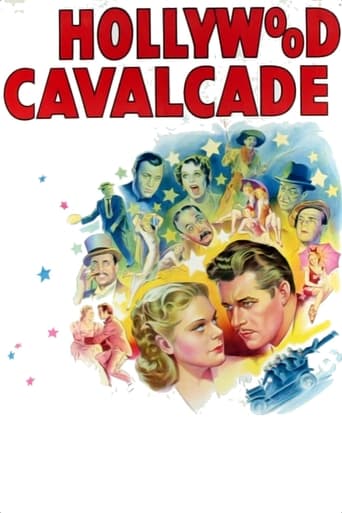

Best movie ever!
... View MoreInstead, you get a movie that's enjoyable enough, but leaves you feeling like it could have been much, much more.
... View MoreA terrific literary drama and character piece that shows how the process of creating art can be seen differently by those doing it and those looking at it from the outside.
... View MoreWorth seeing just to witness how winsome it is.
... View MoreAfter doing a character based on Fanny Brice in Rose Of Washington Square, Alice Faye in Hollywood Cavalcade decided to do an early version of the story of Mack and Mabel for Hollywood Cavalcade. Alice does not come to as tragic an end as Mabel Normand and Don Ameche as the Mack Sennett character had far more grandiose ambitions than Sennett ever had.Budding young director Don Ameche sent to sign stage actress Alice Faye for a studio instead signs her to a personal contract and then uses that to blackjack studio boss Donald Meek into a chance for him to direct the film. Meek reluctantly caves in, but the film is a hit, a star is born and nothing succeeds like success and careers for Ameche and Faye are born.Ameche loves Faye enough, but never shows a tender side always thinking of business. She marries co-star Alan Curtis and they become instead of Mack and Mabel more like Douglas Fairbanks and Mary Pickford. Ameche in a fit of pique tears up their contract and then makes a series of bonehead decisions that tears up his career.For reasons that remain inexplicable Darryl Zanuck decided to cut a version of Alice Faye singing Whispering and the song is only heard in the background. As the song perfectly suits Faye's warm contralto, film fans are left with a loss. Maybe it will be restored one day to Hollywood Cavalcade.The main weakness of Hollywood Cavalcade comes from Ameche who is too much the nice guy to play the part he does. This role far more suited Tyrone Power who had the hero/heel down to perfection.On the plus side we get to see Buster Keaton playing himself and many of the original Keystone Kops in a film showing the development of slapstick comedy. Alice takes a good pie in the face. And Al Jolson repeats his singing of the Kol Nidre chant from the Yom Kippur scene in The Jazz Singer. Good thing Faye was not involved in a scene with Jolson because after working with him on Rose Of Washington Square she could not stand him.Hollywood Cavalcade is not a bad film, but some mistakes made in casting and in editing left it not as good as it could have been.
... View MoreIn 1913 New York City a prop man from Hollywood named Michael Connors (Don Ameche) convinces talented stage actress Molly Adair (Alice Faye) to come to Hollywood to become a star. She does and hits it big in silent comedies with Buster Keaton and the Keystone Cops (all appearing as themselves). She also falls in love with ridiculously handsome Nicky Hayden (Alan Curtis). Connors loves her too...but can't say it.Faye's first color film and she gives a good performance and looks great. Also there are black & white sequences of her doing comedy with Keaton and the cops--and they're actually pretty funny! Who knew Faye could do slapstick? The story is unbelievable from the start but it's breezy and cheerful with Faye, incredibly handsome Curtis and suave Ameche giving their all. There are also quite a few in jokes for silent film fans (I love it when Ameche casually says "Hi Roscoe"). SPOILER!!! Unfortunately it takes a sharp detour at the end where if becomes VERY melodramatic and somber including having a main character die (I have to admit I didn't see that coming). Still it's fun through most of its running time.I never even HEARD of this film until FOX played it recently. It's good that they're showing good old unknown films. BTW--this needs serious restoration. The b&w sequences look great but the color is badly faded (Faye's face looks pure white a few times!) and needs to be fixed.
... View MoreALICE FAYE is very lovingly photographed in her first Technicolor film, even though it does require her to get a few pies thrown in her face. DON AMECHE puts so much energy into his role as a wanna be director that he often sounds like Jackie Gleason on "The Honeymooners" when he goes into one of his tirades. Both perform well within the limits of a tiresome boy meets girl, boy loses girl, boy wins girl kind of story set against the early days of motion pictures.The premise is a good one--using B&W whenever depicting scenes from the films that Molly Adair (Alice Faye) is doing with the Keystone Cops, Buster Keaton, Eddie Collins, Ben Turpin and Chester Conklin, real stars from the silent era. But what starts out as a promising romantic comedy soon delves into trite romantic situations with Faye pining for Ameche, whose mind is never on romance but only on hard work as he dreams up new ideas for her future films. ALAN CURTIS is the leading man Ameche chooses for her and she falls in love with him. But never fear, the script makes sure that she winds up with a reformed Ameche at the end.Most of it is good fun but the middle part sags a bit and the script loses all originality once it starts to feel sorry for its heroine. It's a shame nobody gets a chance to sing or dance--which may have livened things up a little after the midway point.Interesting mainly as a glimpse at how silent films were made from the period 1913 through 1928. There's even a peek at Al Jolson's breakthrough talkie "The Jazz Singer," although it's a recreation and not a clip from the original.
... View MoreWhat makes this one better than most "movie movies" is that it doesn't feel phony. The film the story of the hot-headed director and his rise and fall and rise, by using real recognizable names and events during the silent and early sound eras. Instead of the generic "sound will put us out of business" business, they actually SHOW Jolson and "The Jazz Singer". The acting is really quite good, with believeable performances from Don Ameche, Alice Faye and J. Edward Bromberg in particular.
... View More